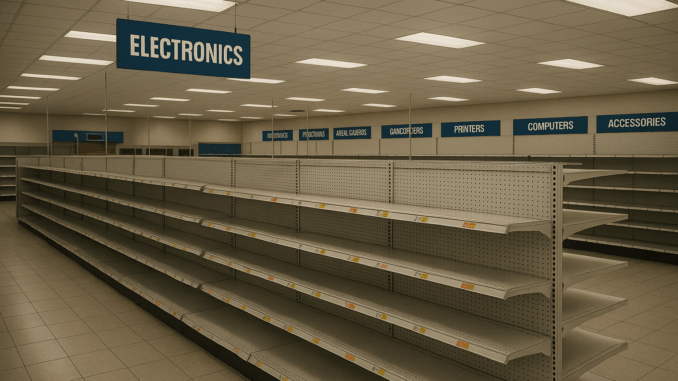
Whatever happened to Maplin? If you grew up tinkering with radios, building your own alarm system, or searching for a weird connector on a rainy Saturday, you knew Maplin. For years, the yellow-and-black shopfronts were a lifeline for Britain’s makers, students, and anyone who wanted to fix or invent something instead of just buying it new. As someone who covered consumer electronics and worked in retail, I saw first-hand how important Maplin was – not just for hobbyists, but for families, teachers, and the odd inventor who’d wander in looking for inspiration.
The Magic of Maplin: A Home for Tinkerers
Unlike the big chains, Maplin was less about the latest TV or stereo and more about what you could build or repair yourself. Their famous catalogue was as thick as a phone book, packed with pages of components, sensors, kits, and cables. I remember spending hours as a teenager circling things I couldn’t afford yet, planning projects with friends and pestering staff about which soldering iron to try next. Parents brought kids in for science fair ideas. Teachers came looking for robotics kits. Every branch felt like its own little tech community.
Christmas at Maplin was something else. The adverts would start in late autumn, and suddenly every window was full of remote-control cars, experiment kits, and things you’d never see in the supermarkets. The run-up to the holidays brought a sense of real excitement – half the customers in the shop were hoping to find the next big thing for under the tree. It was the only place you could grab a bag of LEDs, a magazine on audio circuits, and a musical doorbell kit in the same basket.
Whatever Happened to Maplin? From Boom to Bust
So, whatever happened to Maplin? The story starts in the 1970s with mail-order radio parts and hobbyist kits, before expanding to high streets and retail parks across the UK. By the 1990s and early 2000s, Maplin was booming, serving both the new generation of home computer users and old-school engineers. Need a modem? A breadboard? A special battery for your calculator? Maplin had you covered.
But things started changing fast. Online competition drove prices down, and Amazon and eBay made it easy to order obscure parts from anywhere. Maplin stores felt the squeeze. Stock started to shrink and sometimes the advice at the counter wasn’t what it once was. For many, Maplin still meant quality and community, but profits kept slipping. In 2018, after several years of trouble, Maplin went into administration. Staff lost jobs. Makers and teachers lost a trusted supplier. The high street lost another specialist.
Maplin’s Legacy and the Maker Movement
Why does “whatever happened to Maplin” still matter? Because there’s never really been another place quite like it. If you’re starting out with a Raspberry Pi or building a robot for school, the modern alternatives mean hunting across websites, waiting for deliveries, or piecing together advice from forums. Maplin would have thrived in today’s maker movement. I can easily picture shelves stacked with the latest Pi boards, Arduino kits, sensors, smart home gadgets, and project books for all ages.
It’s not just nostalgia – Maplin made learning by doing feel possible for everyone. When I talk to parents or teachers now, they still miss being able to walk in and ask for help. That face-to-face advice is something we haven’t quite replaced. The new wave of community workshops, makerspaces, and Pi Jams capture a bit of that old Maplin spirit, but the convenience and breadth of Maplin’s stock is hard to match.
A High Street Loss, A Tinkerer’s Lesson
Whatever happened to Maplin is more than just another failed shop. It’s a reminder of how much we gained from having specialists on our high streets – and how much we lose when they’re gone. Maplin powered generations of inventors and tinkerers, made mistakes safe to try, and turned technical curiosity into real projects.
For a deeper look at how these stories connect, read our companion feature: Whatever Happened to Dixons?
Further reading:

Leave a Reply